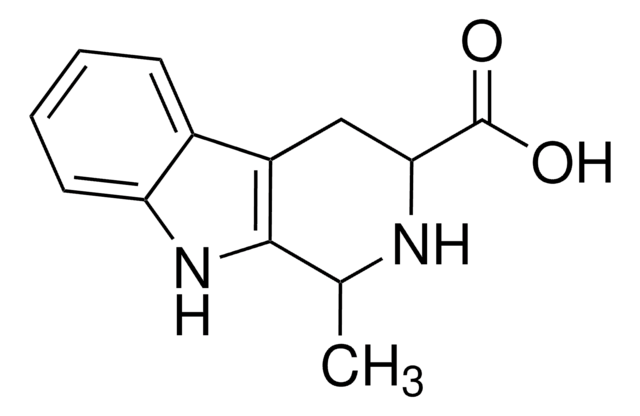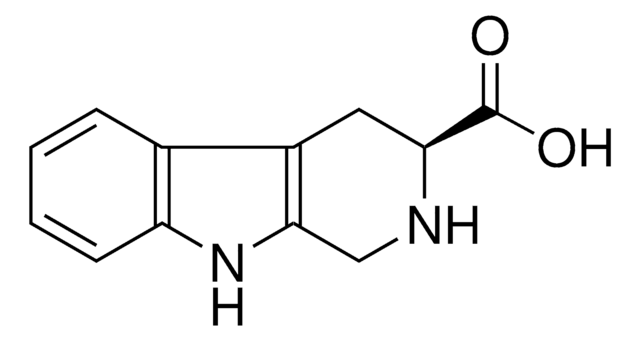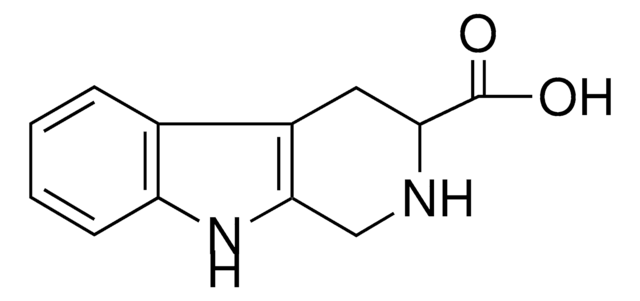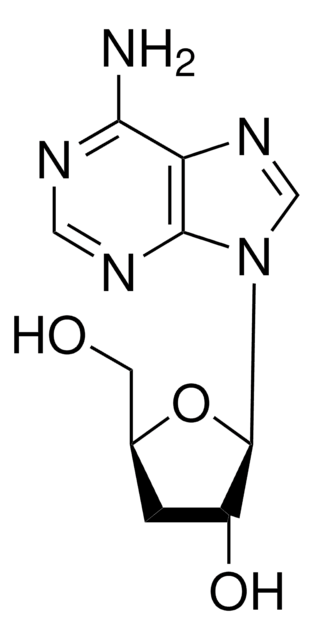H0500
1,2,3,4-Tetrahydroharmane-3-carboxylic acid
Sinónimos:
1-Methyl-1,2,3,4-Tetrahydropyrido[3,4-b]indole-3-carboxylic acid, 1-Methyl-1,2,3,4-tetrahydro-β-carboline-3-carboxylic acid, NSC 26225
About This Item
Productos recomendados
temp. de almacenamiento
−20°C
Nivel de calidad
cadena SMILES
CC1NC(Cc2c1[nH]c3ccccc23)C(O)=O
InChI
1S/C13H14N2O2/c1-7-12-9(6-11(14-7)13(16)17)8-4-2-3-5-10(8)15-12/h2-5,7,11,14-15H,6H2,1H3,(H,16,17)
Clave InChI
ZUPHXNBLQCSEIA-UHFFFAOYSA-N
¿Está buscando productos similares? Visita Guía de comparación de productos
Categorías relacionadas
Aplicación
- Cytotoxicity and insecticidal activities of harmine derivatives
- Isoquinolines, β-carbolines, and 3-deazapurines via oxidative decarboxylation
- Cytotoxic evaluation of 1,3-di- and 1,3,9-trisubstituted β-carbolines
Acciones bioquímicas o fisiológicas
Código de clase de almacenamiento
11 - Combustible Solids
Clase de riesgo para el agua (WGK)
WGK 3
Punto de inflamabilidad (°F)
Not applicable
Punto de inflamabilidad (°C)
Not applicable
Equipo de protección personal
Eyeshields, Gloves, type N95 (US)
Elija entre una de las versiones más recientes:
Certificados de análisis (COA)
¿No ve la versión correcta?
Si necesita una versión concreta, puede buscar un certificado específico por el número de lote.
¿Ya tiene este producto?
Encuentre la documentación para los productos que ha comprado recientemente en la Biblioteca de documentos.
Los clientes también vieron
Nuestro equipo de científicos tiene experiencia en todas las áreas de investigación: Ciencias de la vida, Ciencia de los materiales, Síntesis química, Cromatografía, Analítica y muchas otras.
Póngase en contacto con el Servicio técnico![1,2,3,4-Tetrahydro-9H-pyrido[3,4-b]indole 98%](/deepweb/assets/sigmaaldrich/product/structures/181/460/3d58bc34-1b5c-4295-bbac-3b52085670e8/640/3d58bc34-1b5c-4295-bbac-3b52085670e8.png)









